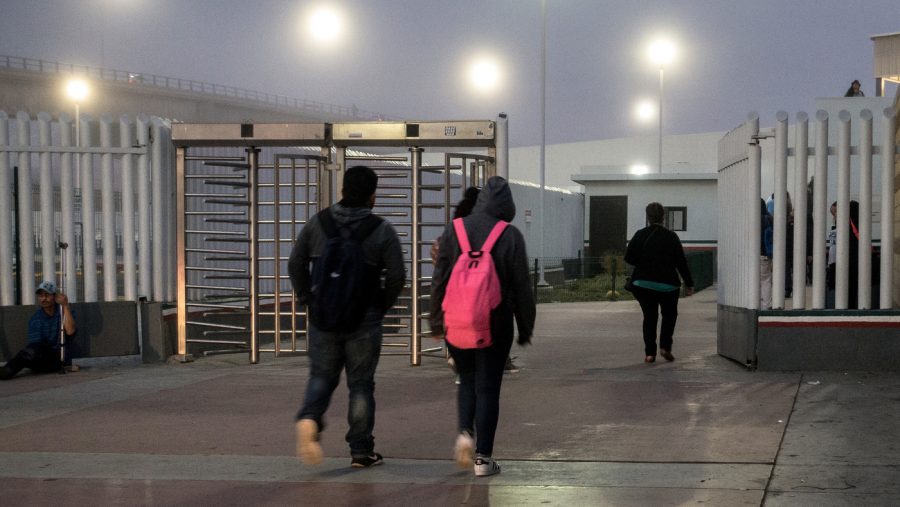Crossing the Border for Education
Jonathan Levinson for NPR
Students in Tijuana walk toward the U.S. border early in the morning on May 2. Teachers in San Diego estimate that about 1,000 students cross from Tijuana into San Diego every day to go to school.
April 8, 2020
Education is an important need for success, and for some children in other countries, it is a need that isn’t met. At the US/Mexico border, the inequality of education can be seen perfectly.
In Mexico, education is highly underfunded, and many students can’t afford textbooks and supplies needed.
The amount of U.S.-born minors living in Mexico doubled between 2000 and 2015. Now an estimated half a million US children live south of the border.
It is estimated that 40,000 children cross the U.S. border into Texas, California, New Mexico, and Arizona every single day to attend school. Many of the students who cross come from families whose parents are not American citizens. Most of the students are U.S. citizens who live in Mexico and have the right to better education.
In El Paso, Texas, the second-largest city on the U.S- Mexico border, a group of kids wait 3-4 hours to cross the bridge every morning. Parents drive their kids to the bridge because they want a better education and a better future for their kids. The students line up every morning and pass through Customs and Border protection facilities. Immigration officers scan their papers and put their backpacks through an X-ray machine.
A checkpoint sits right behind Bowie High School in Texas. Border Patrol agents used to patrol Bowie in the 1990’s and request to see students’ documents. Bowie students sued the federal government for violating their civil rights, a case they luckily won.
The students lose a lot of sleep from coming and going at early and late hours. Students who do extracurricular activities sometimes stay at friends’ houses overnight because it gets dark and too late to cross the border.
At graduation, many of these students walk the stage without parents there to applaud. Instead, parents watch their child’s graduation ceremony through live streaming because they are not allowed to enter the U.S.
Hearing stories about these students helps students like me realize how much we in America take our education for granted. We are very fortunate to have the school supplies we need and easy transportation to and from our schools.



